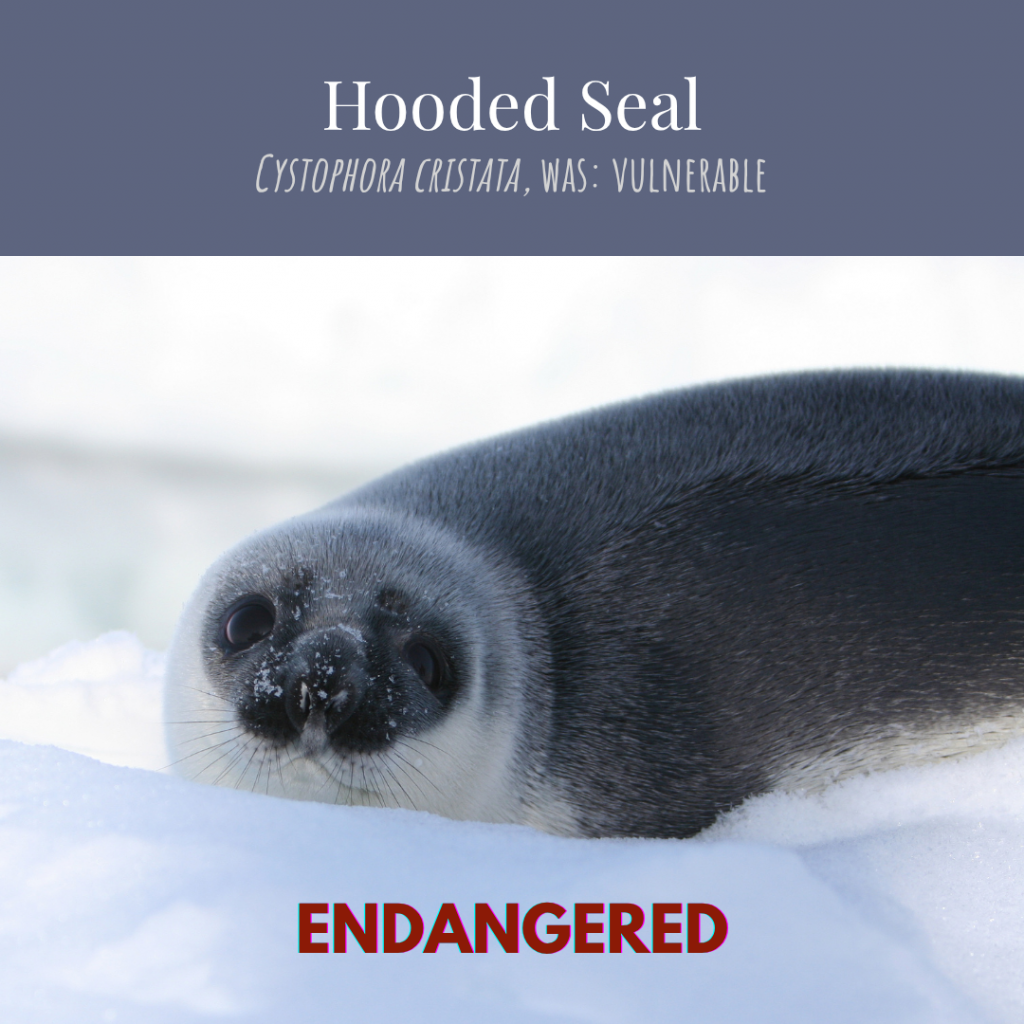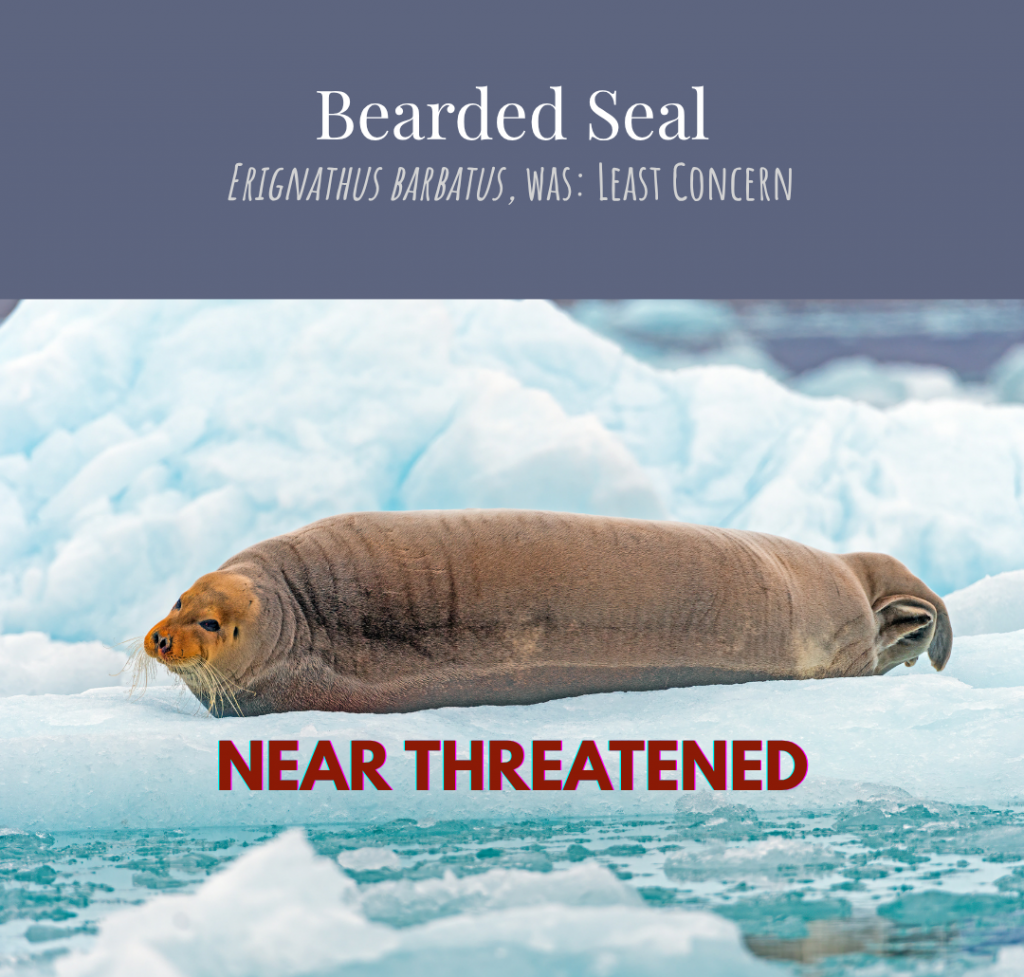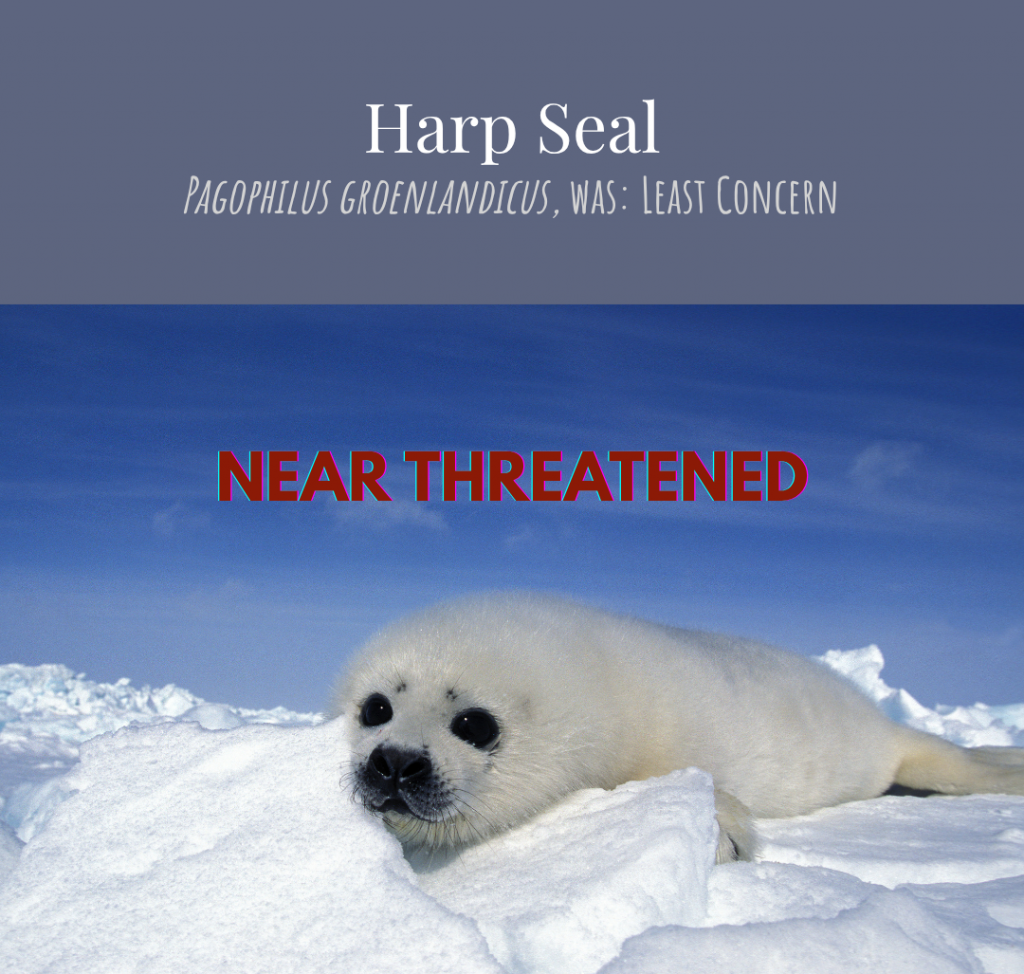
At the IUCN World Conservation Congress in Abu Dhabi on October 10, 2025, three Arctic seal species were uplisted on the IUCN Red List of Threatened Species: hooded seals, harp seals, and bearded seals are now officially closer to extinction.
Why Are Arctic Seals at Risk?
The primary driver is climate change. Thinning sea ice is transforming the Arctic, opening new shipping lanes and increasing human activity. These so-called “ice seals” rely on stable ice for resting, breeding, and feeding. When the ice disappears or becomes too thin before pups are weaned and gain enough weight (and insulation) to swim for prolonged times, they cannot survive.
What Changed in Their Red List Status?
- Hooded seal: Uplisted from Vulnerable to Endangered: now considered at high risk of extinction in the wild.
- Harp seal and bearded seal: Uplisted from Least Concern to Near Threatened: indicating emerging threats that require conservation attention.
What Does This Mean for Conservation?
The IUCN Red List is a scientific tool, it doesn’t automatically trigger legal protections. National laws and international agreements like CITES are needed to enforce conservation measures. However, uplisting can help justify funding for research and conservation action.
There’s precedent for success: at the same congress, green sea turtles were downlisted thanks to decades of coordinated global conservation efforts.


The Arctic Challenge: No Seal Centers in the Ice
Unlike harbor and grey seals, Arctic species rarely receive direct care. Harp and hooded seals occasionally appear at rehab centers in Europe or the U.S. East Coast as transient patients far from their natural habitat. Still, veterinary and husbandry knowledge from these cases could prove valuable.
The loss of sea ice affects all ice-dependent species, from ringed seals to polar bears. If climate change continues at its current pace, Antarctic species may face similar threats. While creative solutions like artificial birthing huts are helping the Saimaa ringed seal, such interventions are less viable in vast, remote Arctic regions, especially if the seals face a general loss of the conditions they need to survive. Conservation action, like identifying (and ideally protecting) critical resting and breeding areas for ice seals can buy time, but without systemic change, their habitat will vanish.
What's Next?
More data is urgently needed. Population estimates for marine mammals are often imprecise and outdated. These seals spend much of their lives at sea, making monitoring difficult. But the earlier we understand the full impact of Arctic changes, the sooner we can develop strategies to protect them.
Conservation works when it’s backed by science, collaboration, and persistence. These seals need all three.
Read the IUCN press release (if for nothing else, for the bearded seal pup photo!)
